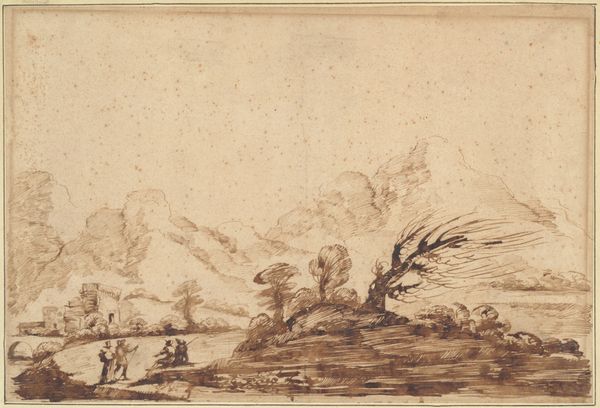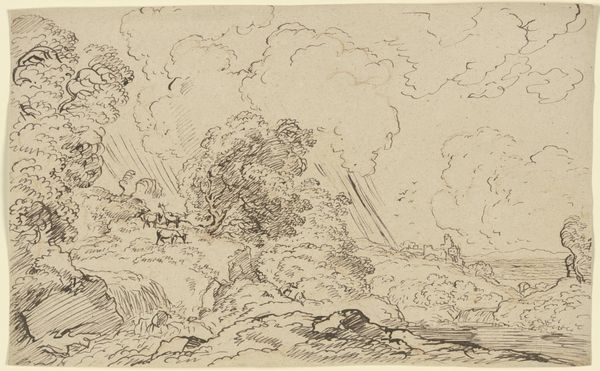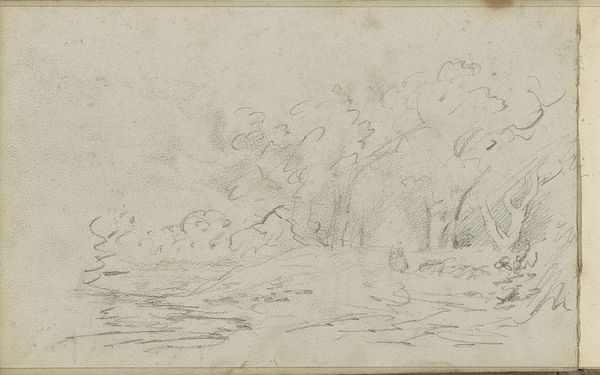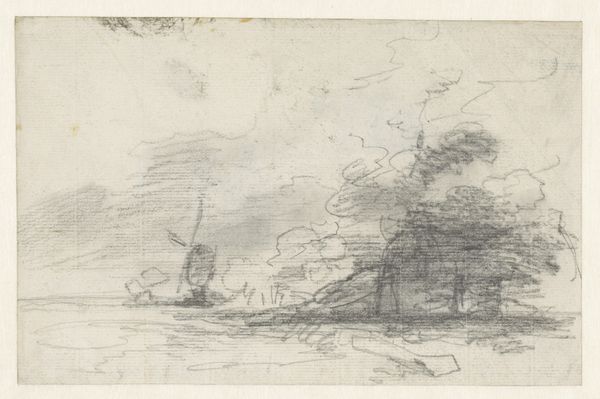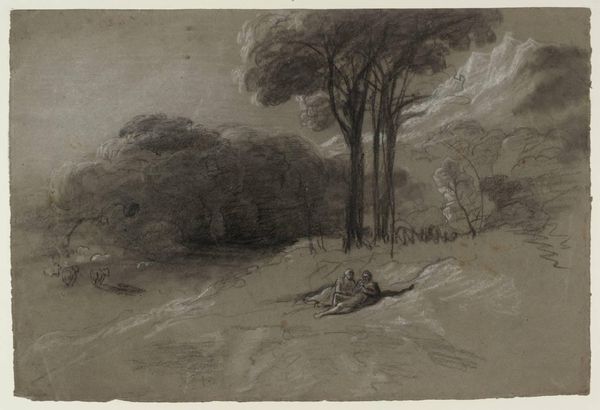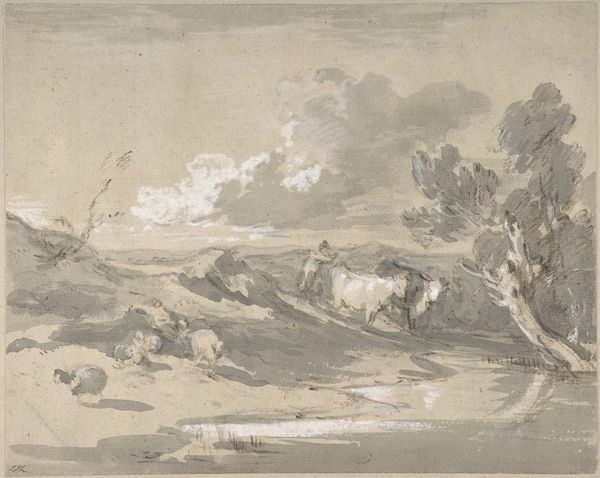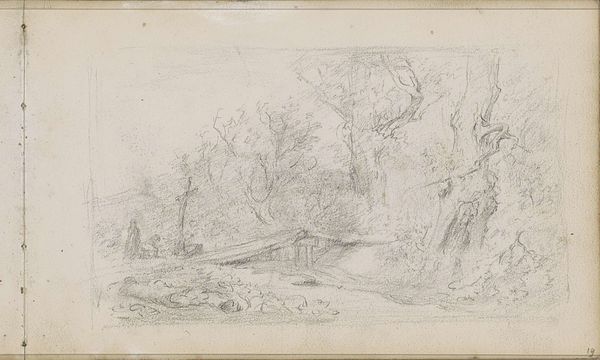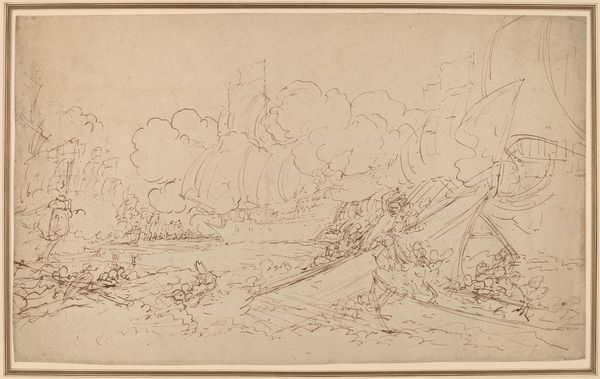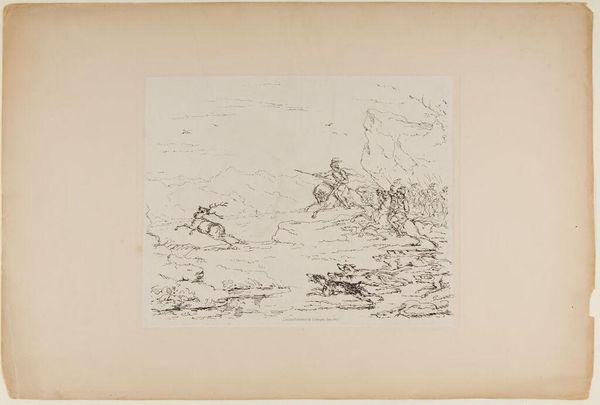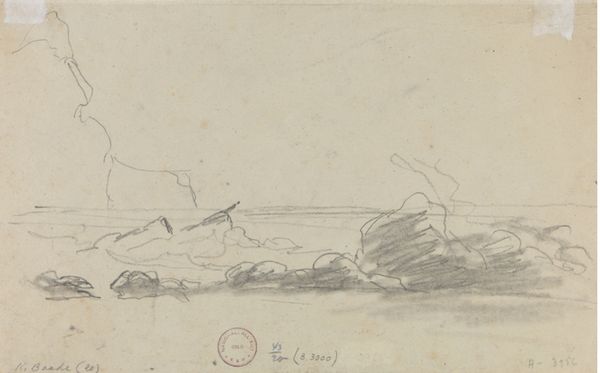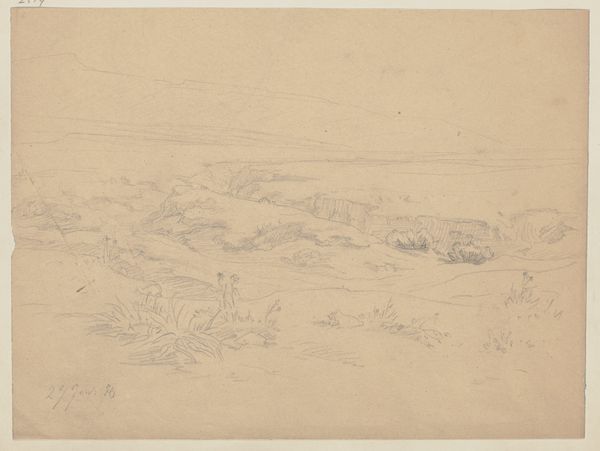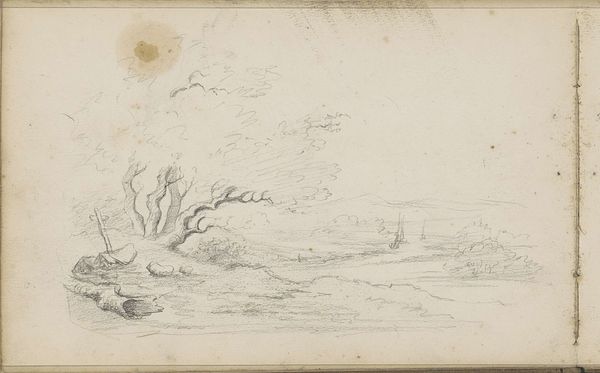
Dimensions: support: 110 x 130 mm
Copyright: CC-BY-NC-ND 4.0 DEED, Photo: Tate
Editor: This is William Collins’s "A Haywain," a pencil drawing held at the Tate. It's quite small. The landscape feels vast, yet also very intimate because of the size. What structural elements define this composition for you? Curator: The tonal range is critical. Note the stark contrast between the foreground's defined shapes and the ethereal, almost dissolving background. The horizon line’s placement also segments the piece. How does that division affect your reading? Editor: It creates a sense of depth. The darker foreground pulls me in, and the lighter sky pushes back. Do you see any philosophical themes emerging through these elements? Curator: The dialectic between clarity and ambiguity mirrors the human relationship with nature. Collins invites contemplation on our place within a world both knowable and ultimately mysterious. The piece seems incomplete, yet totally satisfying. Editor: It's incredible how much feeling he conveys with so few lines. It made me think a lot about the structure of art. Curator: Indeed. Collins exemplifies how form itself can become a powerful carrier of meaning.
